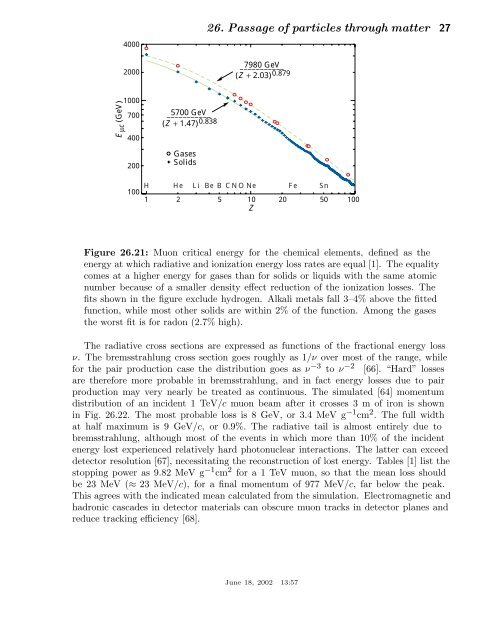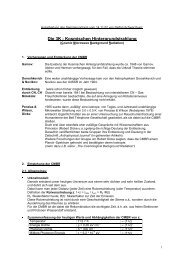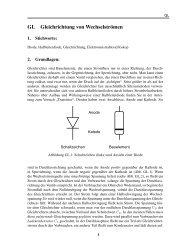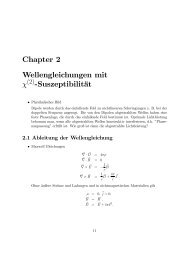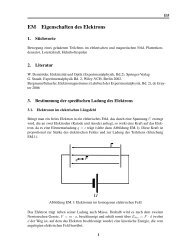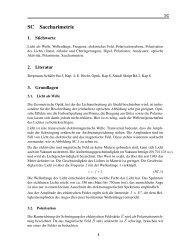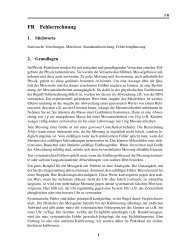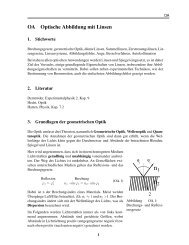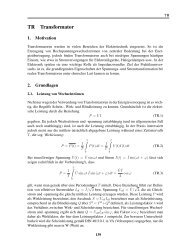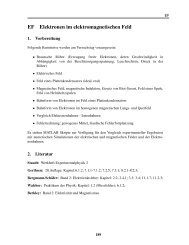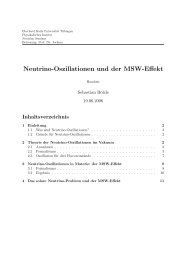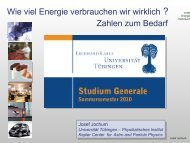26. passage of particles through matter - Particle Data Group
26. passage of particles through matter - Particle Data Group
26. passage of particles through matter - Particle Data Group
Create successful ePaper yourself
Turn your PDF publications into a flip-book with our unique Google optimized e-Paper software.
<strong>26.</strong> Passage <strong>of</strong> <strong>particles</strong> <strong>through</strong> <strong>matter</strong> 27<br />
4000<br />
2000<br />
___________<br />
7980 GeV<br />
(Z + 2.03) 0.879<br />
E µc (GeV)<br />
1000<br />
700<br />
400<br />
200<br />
100<br />
___________<br />
5700 GeV<br />
(Z + 1.47) 0.838<br />
Gases<br />
Solids<br />
H He Li Be B CNO Ne Fe Sn<br />
1 2 5 10 20 50 100<br />
Z<br />
Figure <strong>26.</strong>21: Muon critical energy for the chemical elements, defined as the<br />
energy at which radiative and ionization energy loss rates are equal [1]. The equality<br />
comes at a higher energy for gases than for solids or liquids with the same atomic<br />
number because <strong>of</strong> a smaller density effect reduction <strong>of</strong> the ionization losses. The<br />
fits shown in the figure exclude hydrogen. Alkali metals fall 3–4% above the fitted<br />
function, while most other solids are within 2% <strong>of</strong> the function. Among the gases<br />
the worst fit is for radon (2.7% high).<br />
The radiative cross sections are expressed as functions <strong>of</strong> the fractional energy loss<br />
ν. The bremsstrahlung cross section goes roughly as 1/ν over most <strong>of</strong> the range, while<br />
for the pair production case the distribution goes as ν −3 to ν −2 [66]. “Hard” losses<br />
are therefore more probable in bremsstrahlung, and in fact energy losses due to pair<br />
production may very nearly be treated as continuous. The simulated [64] momentum<br />
distribution <strong>of</strong> an incident 1 TeV/c muon beam after it crosses 3 m <strong>of</strong> iron is shown<br />
in Fig. <strong>26.</strong>22. The most probable loss is 8 GeV, or 3.4 MeV g −1 cm 2 . The full width<br />
at half maximum is 9 GeV/c, or 0.9%. The radiative tail is almost entirely due to<br />
bremsstrahlung, although most <strong>of</strong> the events in which more than 10% <strong>of</strong> the incident<br />
energy lost experienced relatively hard photonuclear interactions. The latter can exceed<br />
detector resolution [67], necessitating the reconstruction <strong>of</strong> lost energy. Tables [1] list the<br />
stopping power as 9.82 MeV g −1 cm 2 for a 1 TeV muon, so that the mean loss should<br />
be 23 MeV (≈ 23 MeV/c), for a final momentum <strong>of</strong> 977 MeV/c, far below the peak.<br />
This agrees with the indicated mean calculated from the simulation. Electromagnetic and<br />
hadronic cascades in detector materials can obscure muon tracks in detector planes and<br />
reduce tracking efficiency [68].<br />
June 18, 2002 13:57


